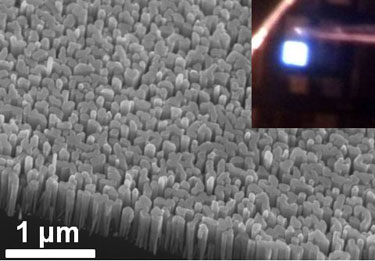
Hits : Update:2019-03-15 11:14
Can people operate the phone completely with gestures without touching the screen with their hands? Can I also automatically charge with ambient lighting? These "black technologies" may be realized in the near future, thanks to a new array of light-emitting diodes (LEDs) that both illuminate and absorb external sources.

Researchers from the University of Illinois at Urbana-Champaign and Dow Electronic Materials in Marlborough, Mass., have recently published research in the journal Science. They showcased new colloidal semiconductor nanorods that allow a single device to generate electro-luminescence while generating electrical energy to convert electrical energy into light energy.
These nanorods less than 5 nanometers in diameter are composed of three semiconductor materials, one of which emits and absorbs visible light, and the other two which control the flow of charge within the first material. The three materials work together to make the LED panel sense external light and make brightness adjustment while emitting light.
Since the LED switches between the illuminating and sensitizing functions at a very fast frequency, the switching is not recognized by the naked eye, so the display panel appears to be constantly lit. At the same time, unlike the light sensors on mobile phones, the metering and dimming of such LED panels occur at the pixel level, so not only can the panel brightness be adjusted according to the external ambient light source, but also the finger swipe over the screen. Subtle light differences allow for gestures that do not touch the screen.
The researchers also found that the LED can absorb external light sources and convert it into current while illuminating, similar to the function of solar panels. Therefore, mobile phones using this LED screen can be charged by illumination. "Self-powered" mobile phone.
In addition, the new LED display can also be used as a large parallel communication array to realize large-scale parallel communication arrays between each other and realize big data exchange between each other.
At present, researchers have successfully demonstrated the relevant functions with the new red LED array. They are trying to combine the red, blue and green LEDs to realize the color array display, and at the same time improve the light absorption capability of the LED by adjusting the composition of the nanorods.